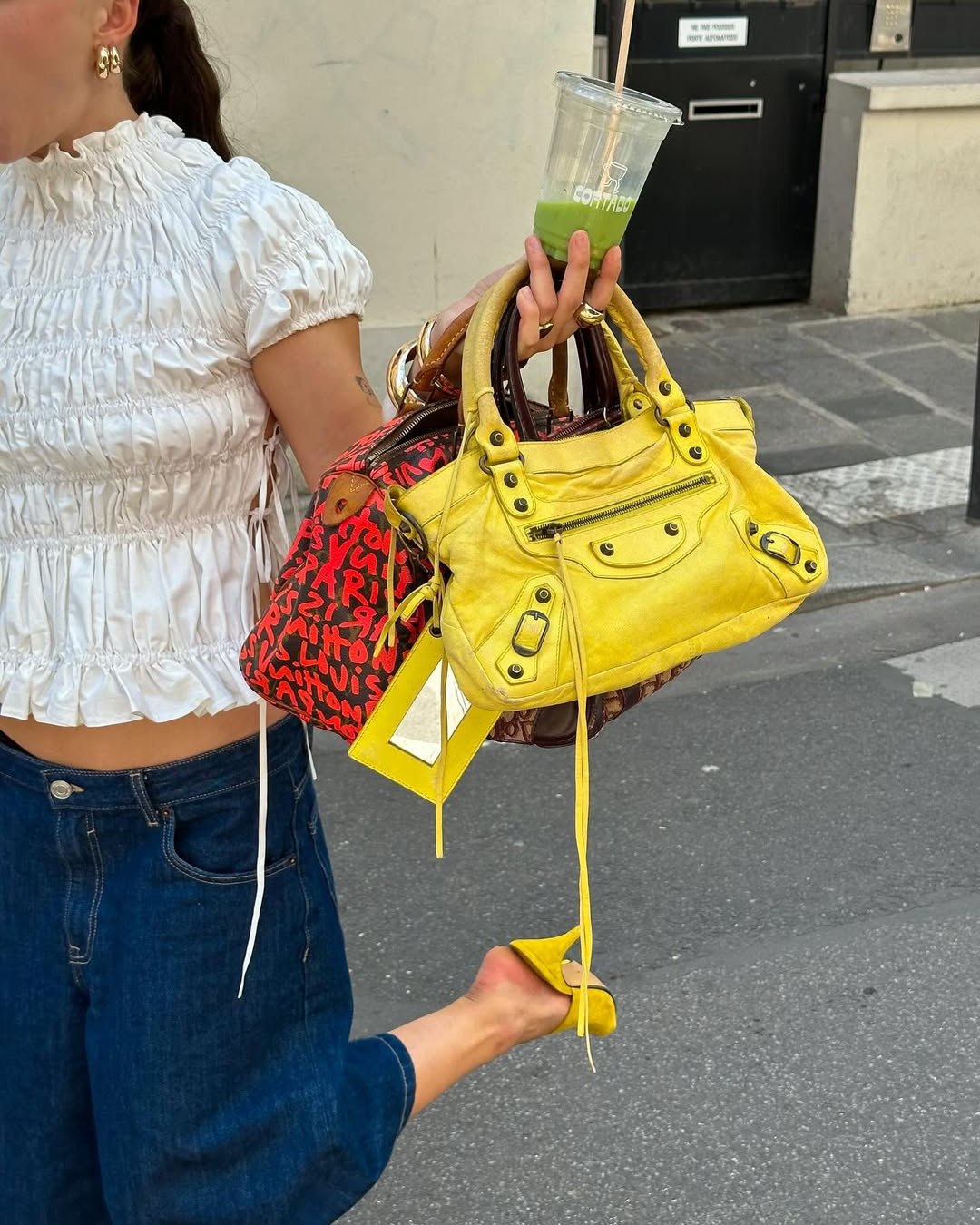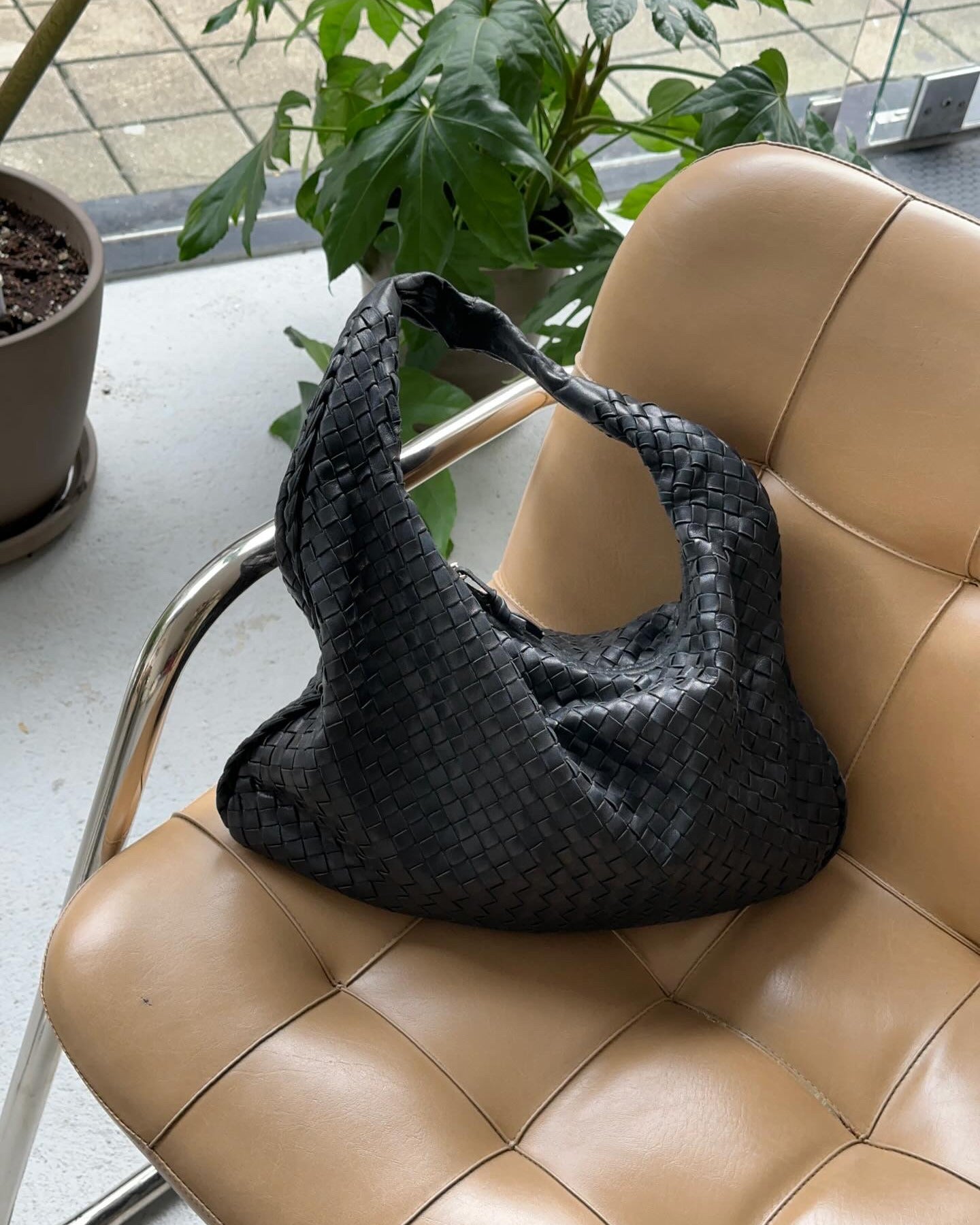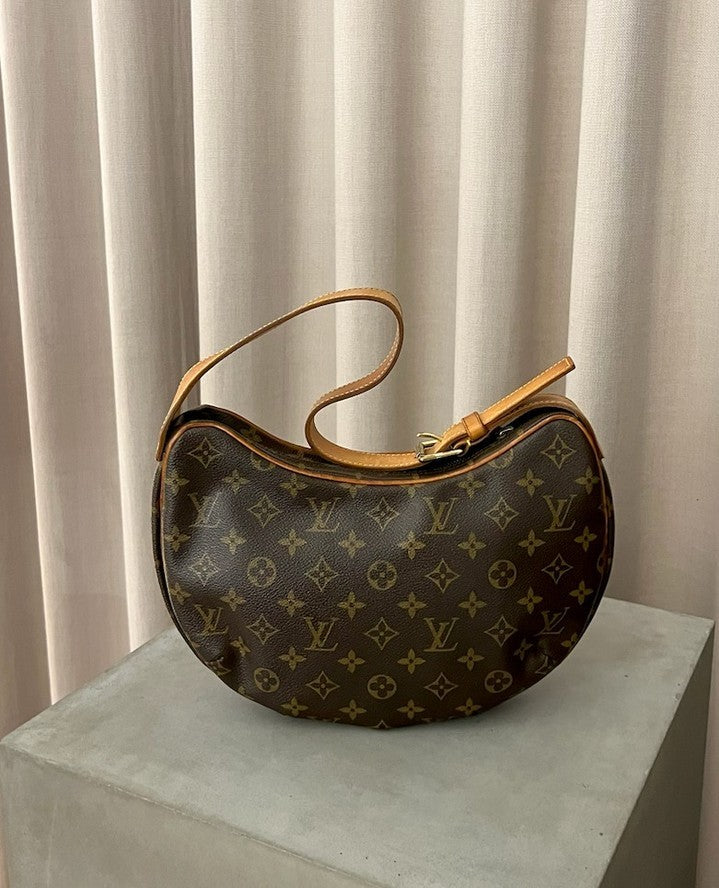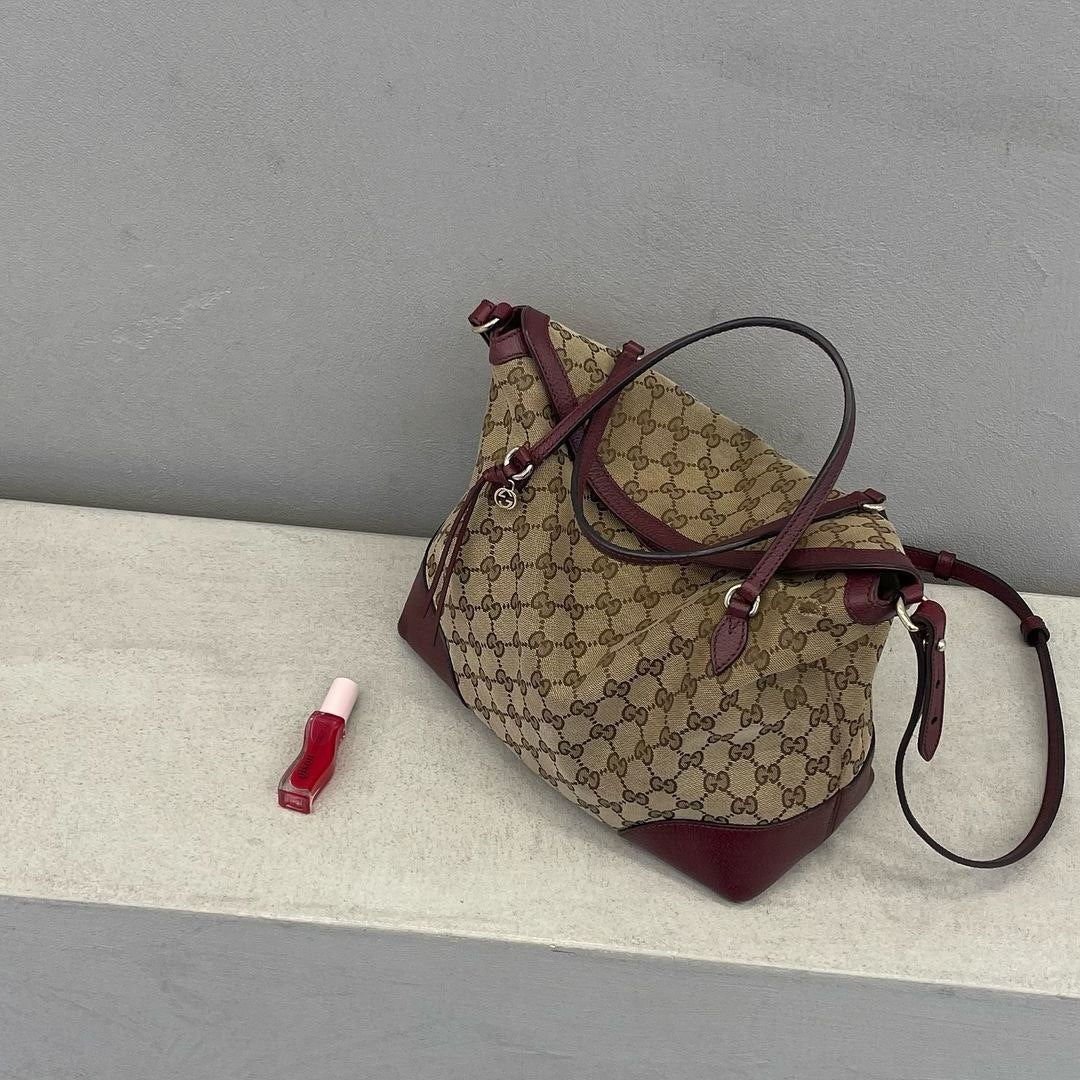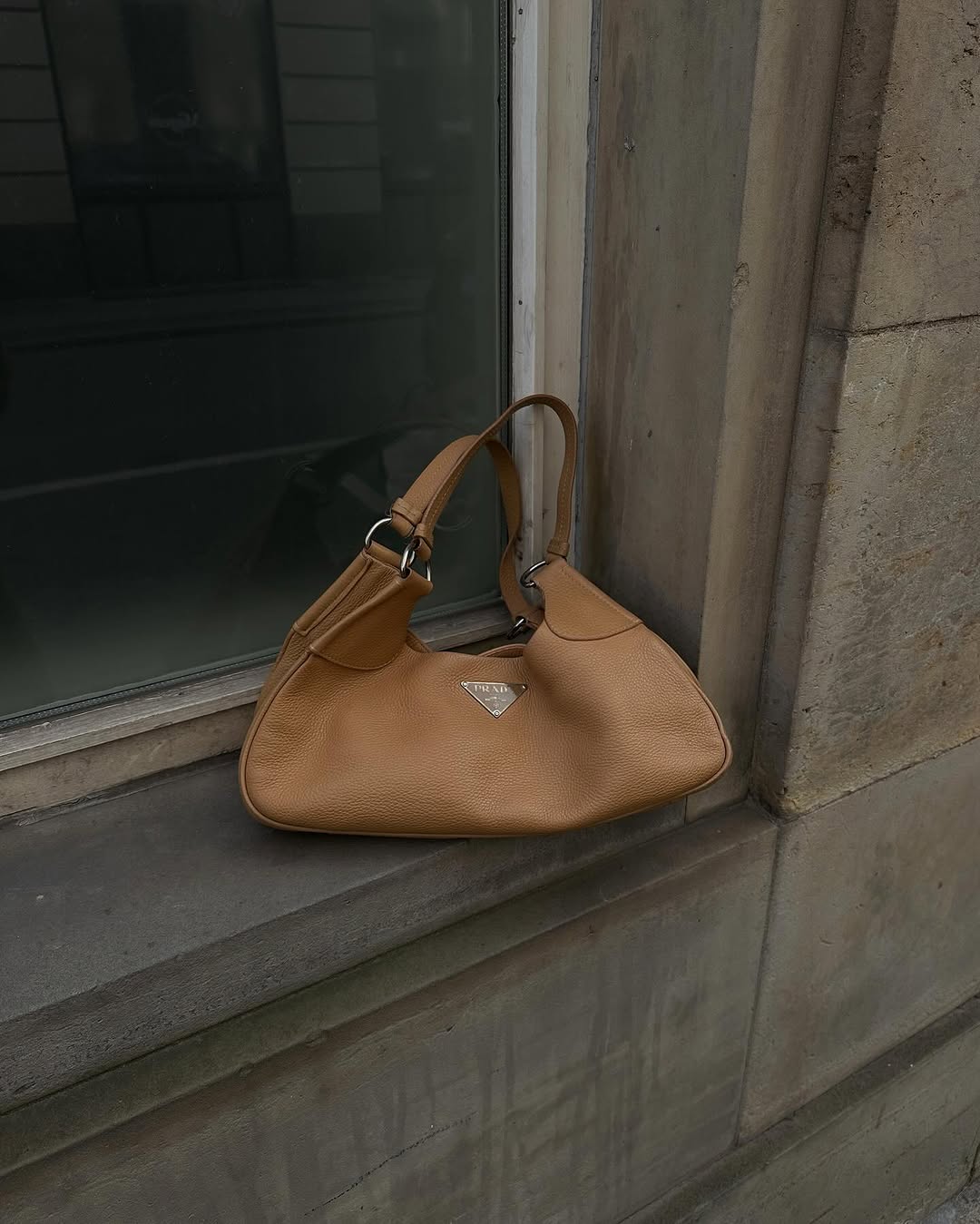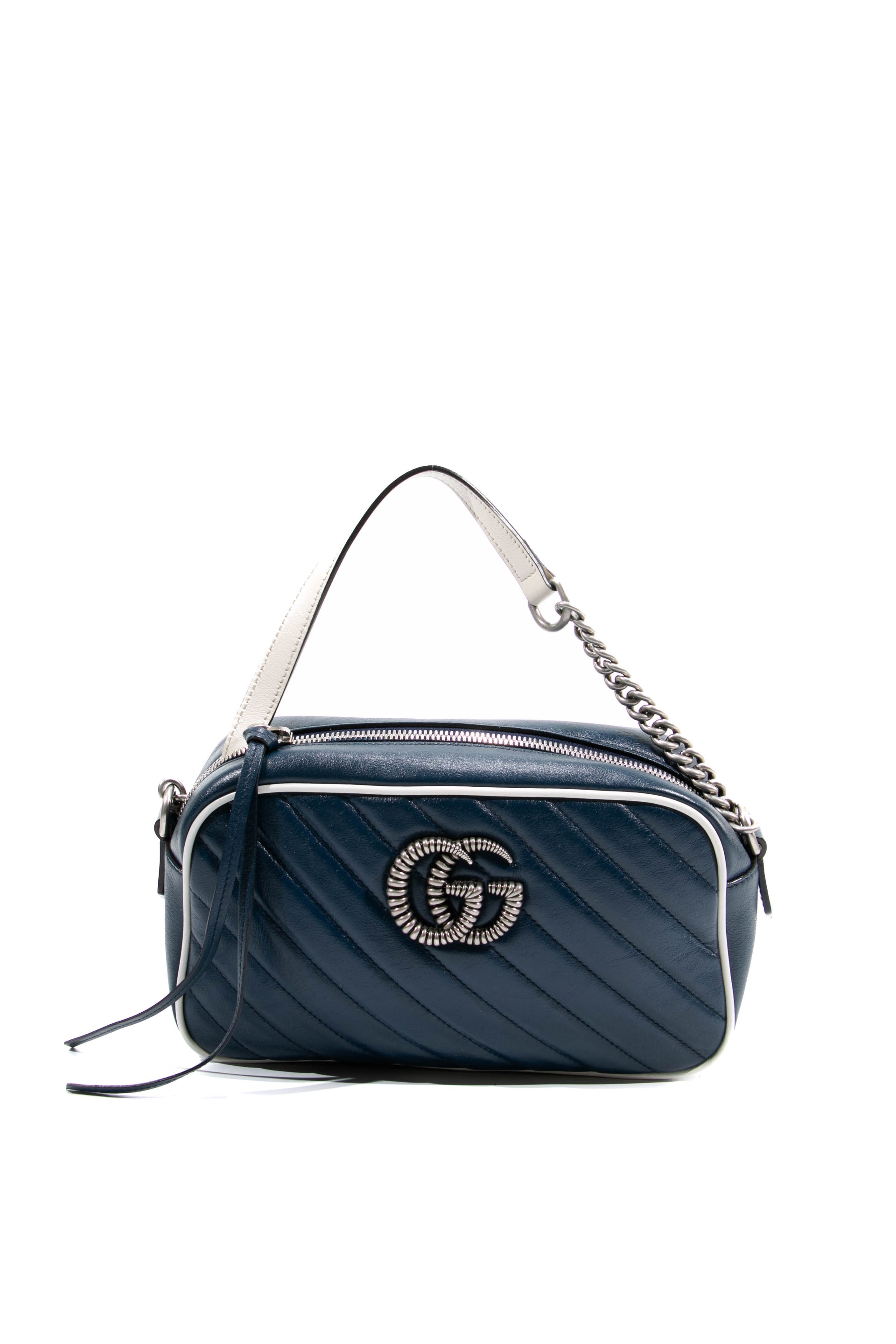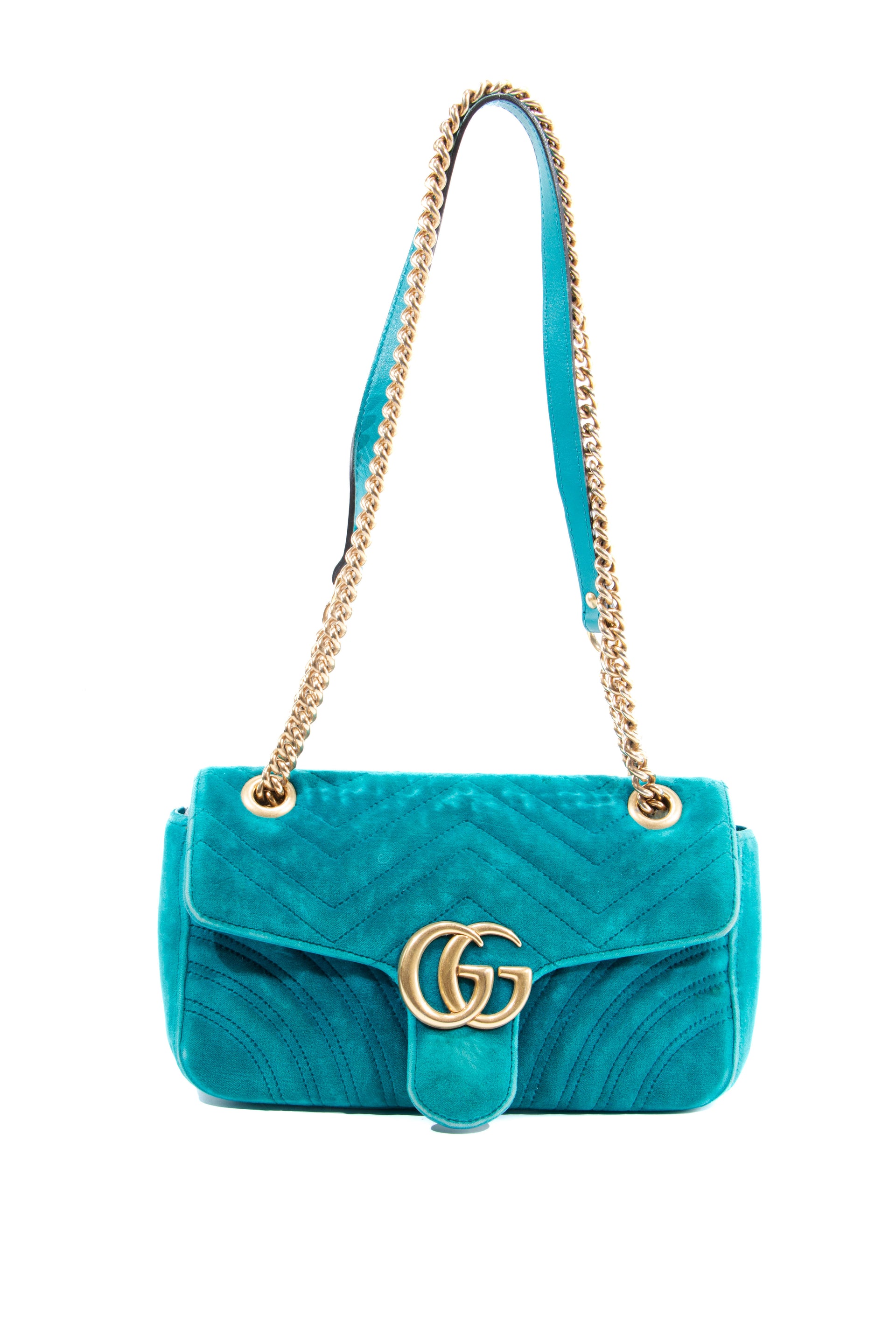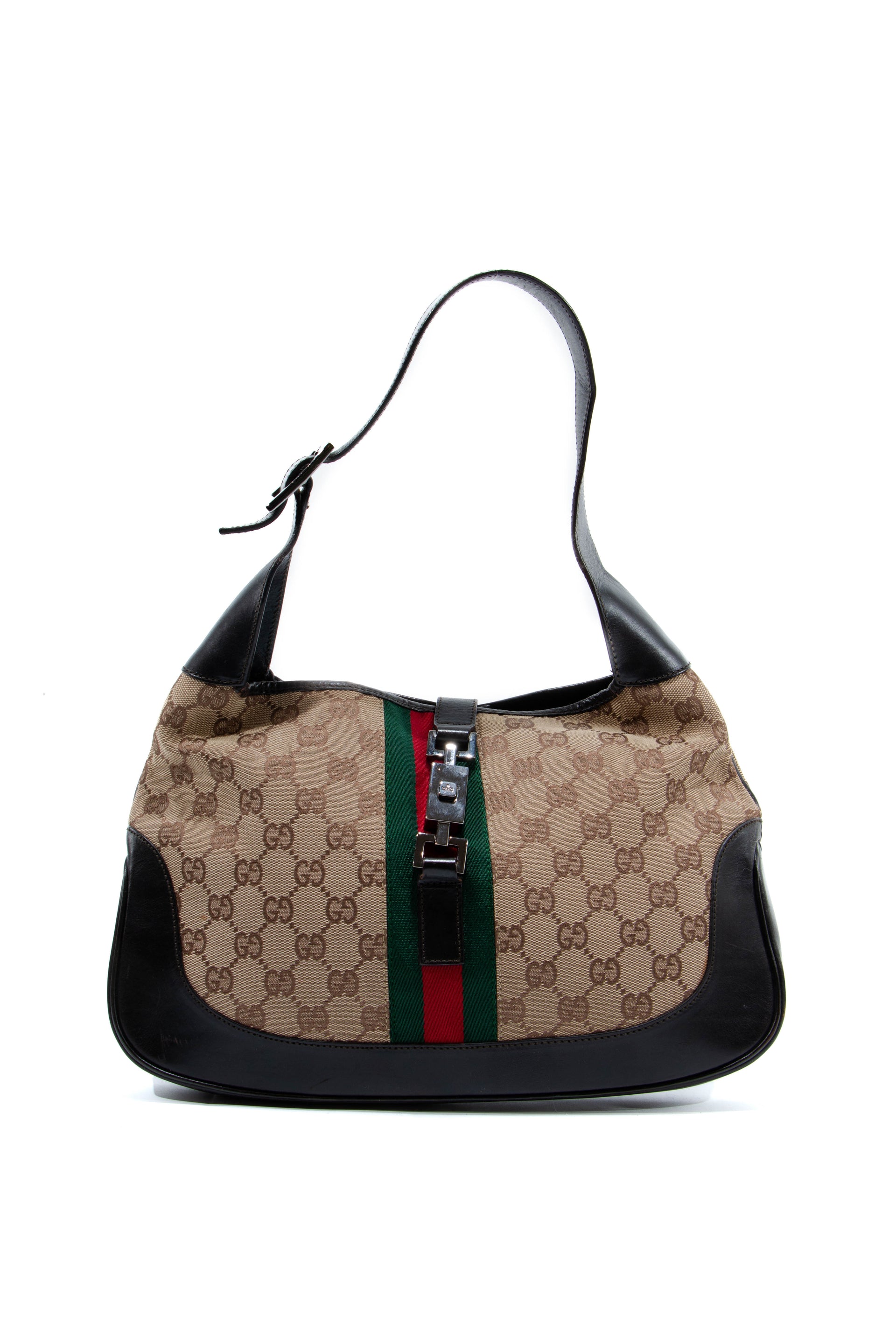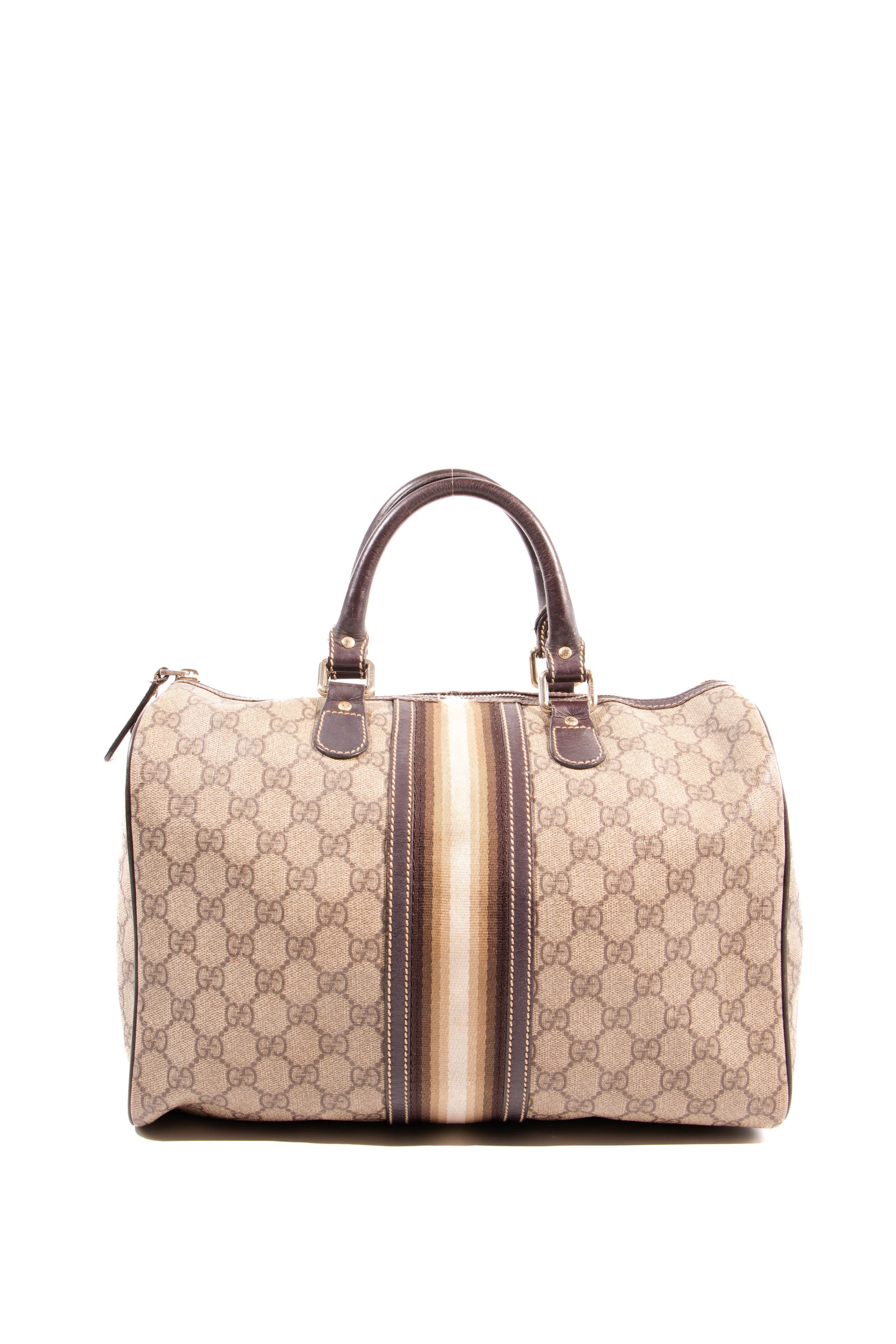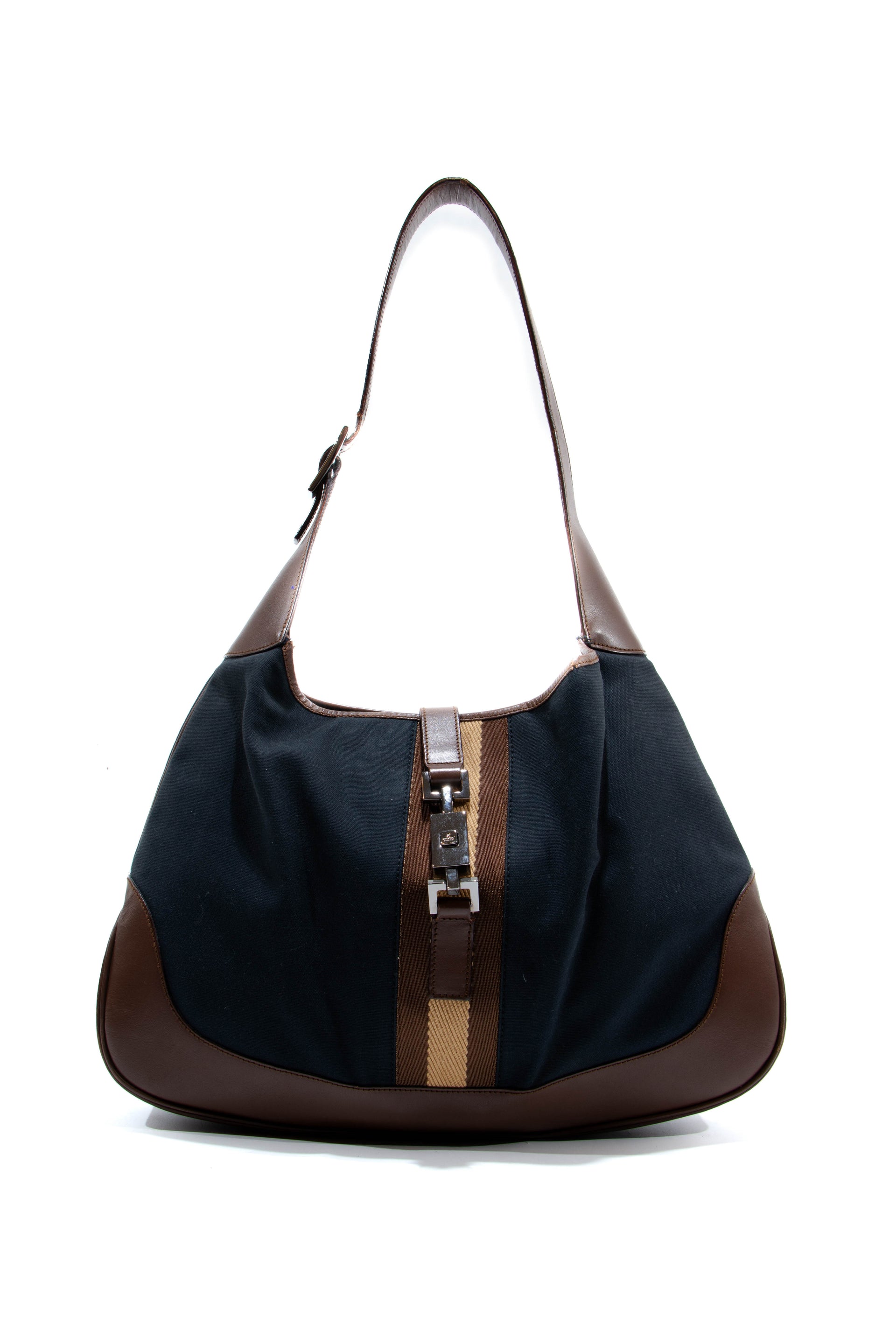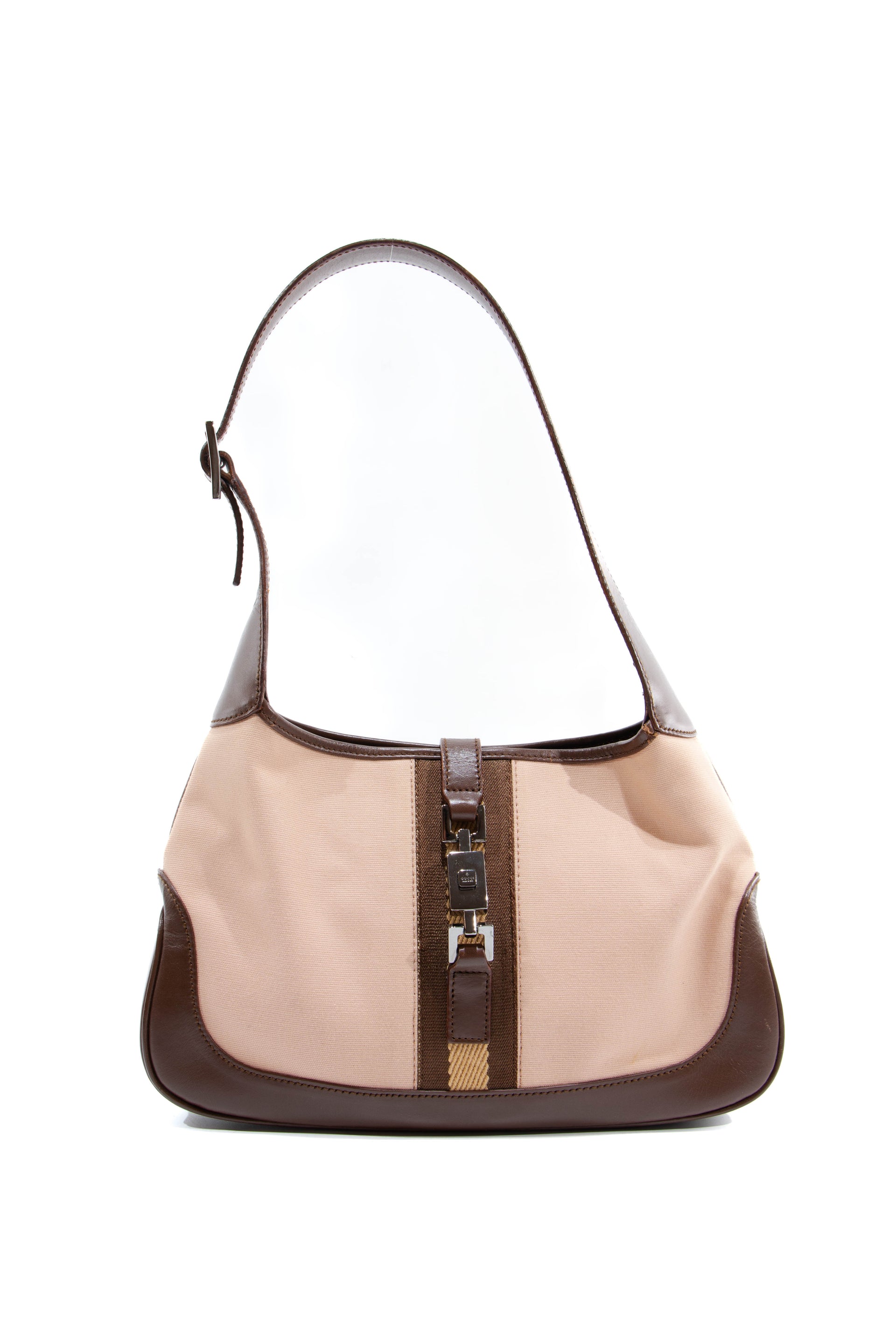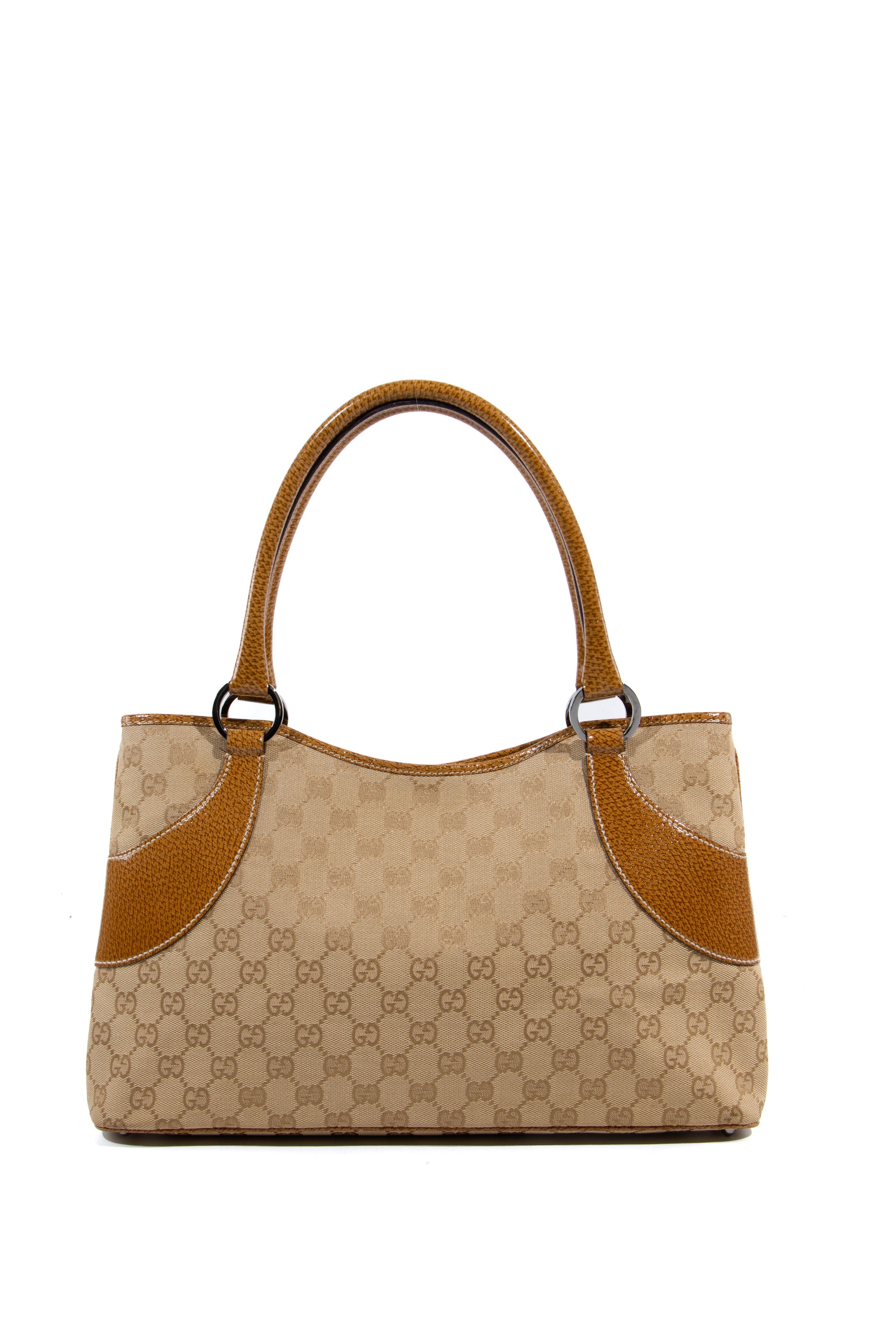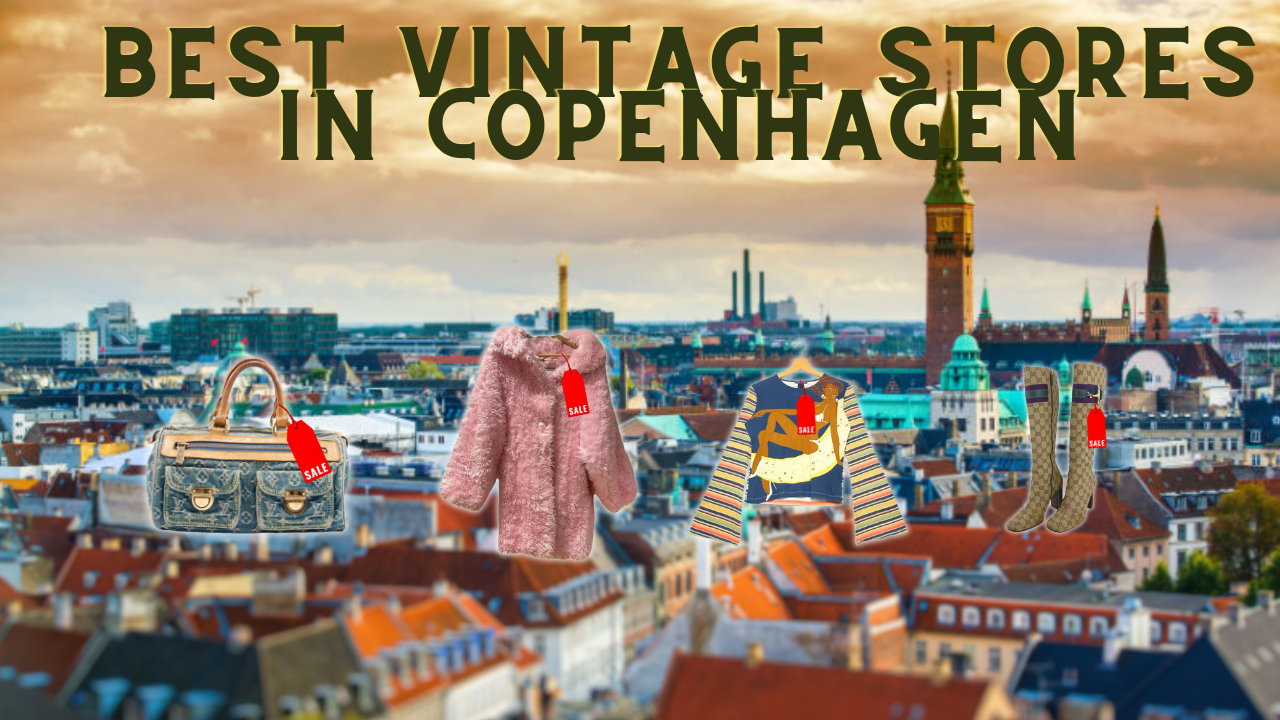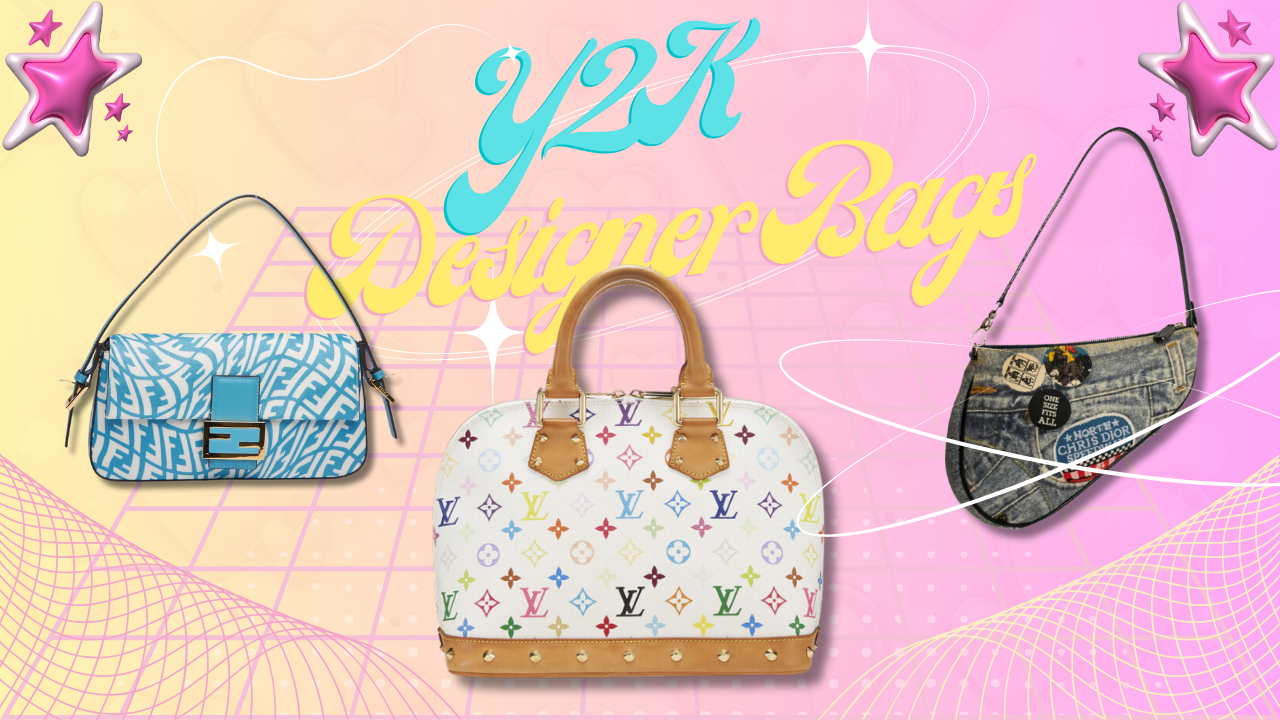As a symbol of luxury and a staple in high fashion, "who owns Gucci" is a popular query for many. Currently, Kering, the renowned French luxury group, holds the Gucci reins. But the history of Gucci is a long and complicated story.
This article unfolds Gucci's intriguing ownership tale and how it came to rest under Kering's expansive umbrella of prestige brands.

Key Takeaways from this guide:
Who owns Gucci now?
The history of the Gucci family
Creative minds and iconic creations of Gucci
Gucci's Storied Past
The vision of Guccio Gucci came to life in the heart of Florence in 1921. His inspiration stemmed from the luxury luggage he encountered while working at London's Savoy Hotel, which led him to establish a brand that eventually became the epitome of Italian luxury and elegance.
As the brand grew, so did its repertoire, introducing the first signature print—a crisscross of interlocking diamonds—adorned on their travel accessories, a nod to the affluent clientele Guccio aspired to captivate.
The Gucci brand flourished under the guidance of Guccio's sons, Aldo and Rodolfo, extending its influence beyond Italian borders. Aldo, in particular, was instrumental in introducing iconic materials and designs such as the Bamboo Bag and the Gucci GG logo, propelling the brand into the limelight of the 1960s fashion scene.
With stores blossoming in Rome, Milan, and New York, the Gucci family crafted an international presence, registering trademarks that uphold Gucci's reputation as a beacon of luxury and style.

The Ownership Journey of Gucci
The narrative of Gucci's ownership is as complex as the designs on its renowned handbags. From the hands of its founding family to the strategic partnerships that unfolded, the luxury brand's narrative is punctuated by ambition and transformation.
The Gucci name was transferred over time, creating a narrative of achievements and challenges that ultimately led to its acquisition by the French luxury group, Kering.
Family Control and Power Struggles
Guccio Gucci's death in 1953 was a turning point, as his descendants took over the control of the empire. Aldo Gucci, the eldest, steered the ship of the brand towards global waters, fostering profitability and acclaim. However, the horizon was not clear of storms; Rodolfo and later his son Maurizio Gucci took the helm, only to find themselves navigating through treacherous familial waters marked by discord and betrayal.
The third generation of the Gucci family was marred by feuds that would rival any Shakespearean drama. Paolo Gucci's endeavor to establish his own fashion line after being ousted from the company and revealing Aldo's tax evasion was but a prelude to the internal conflicts that followed. The partnership between Maurizio Gucci and Paolo, once united against external threats, crumbled, leading to more familial strife.
These power struggles, often referred to as the Gucci wars, not only jeopardized the brand's success but also culminated in dark, tragic outcomes that shook the House of Gucci to its core.

LVMH's Involvement
Hennessy Louis Vuitton, the French luxury group known as LVMH, entered the Gucci saga with a seemingly innocuous 5 percent stake. Yet, under the strategic guise of Bernard Arnault, this stake swiftly ballooned to over a third of the company, a clear signal of intent to seize control of the Italian design powerhouse. LVMH's battle for dominance was not without its chess moves; the conglomerate's legal maneuvers to appeal against a capital increase were a gambit to shield itself from an 'inappropriate shareholder'—a thinly veiled reference to the burgeoning influence of rival PPR.
The struggle for Gucci reached a crescendo when PPR, the entity that would evolve into Kering, struck a settlement with LVMH. The French luxury group relinquished its shares, a denouement that pivoted Gucci towards a new era under a different banner.
want to know more about LVMH? check our blog post: Who owns Louis Vuitton, Dior and Fendi? Meet Bernard Arnault, the man behind the biggest designer brands
Kering Takes the Reins
The year 1999 marked a watershed moment as PPR, led by Francois Pinault, laid claim to a 42% stake in Gucci Group, planting the seeds for what would become a blooming luxury empire. This strategic coup was solidified in 2004, as Kering (formerly PPR) unfurled its banner over nearly the entirety of the Gucci Group, a move that signaled the company's metamorphosis into a luxury goods colossus.
With the acquisition complete, Kering anointed Gucci as the jewel in its crown, a brand that would not only symbolize its commitment to luxury but also drive substantial revenue for the group. Kering's portfolio, now embellished with names like Saint Laurent and Bottega Veneta, underscores its status as a behemoth in the world of high fashion.
Creative Minds Behind Gucci
A host of visionaries have molded the evolution of the Gucci brand, each making a lasting impact on its creative trajectory. Tom Ford, known for his transformative role as the creative director in the '90s, is credited with revamping Gucci's image, infusing it with modernity and sex appeal. Frida Giannini followed, joining Gucci as a handbag designer and rising to the creative director, where she honored the brand's Italian craftsmanship and heritage.
Alessandro Michele, appointed by CEO Marco Bizzarri in January 2015, brought an eclectic, androgynous aesthetic, redefining Gucci for a contemporary audience. More recently, the mantle has been passed to Sabato De Sarno, whose rich experience in the fashion industry is anticipated to further the brand's legacy, starting with his inaugural collection at Milan Women's Fashion Week for the spring-summer 2024 season.

Iconic Gucci Creations
Gucci creations that have evolved into cultural icons feature prominently in the annals of fashion history. From accessories that have graced the arms of the world's elite to footwear that has stepped through the halls of the art world, these designs are emblematic of the brand's enduring allure and innovative spirit. The work of a skilled head accessories designer is evident in the stunning pieces that continue to captivate fashion enthusiasts.
Bamboo Bag
Emerging from wartime material constraints, the Bamboo Bag, with its innovative bamboo handle, made its debut in 1947, demonstrating Gucci's resourcefulness. This design not only showcased a unique blend of functionality and style but also embodied the resilience and creativity at the heart of the brand.
Through the decades, the Bamboo Bag has embraced new forms, melding its iconic bamboo handle with contemporary designs and luxurious materials. Its revival in the 21st century has only reinforced its status as a timeless classic, a piece that captures the essence of Gucci's storied past while looking boldly into the future.

Gucci Loafers
When the Gucci Loafer graced the world in 1953, it was more than a shoe; it was an emblem of the jet-set lifestyle, a marriage of casual elegance and the equestrian heritage of the Gucci family. It didn't take long for this signature piece to find its way onto the feet of Hollywood stars and international dignitaries, cementing its position as a symbol of leisure and luxury.
Such was the impact of the Gucci Loafer that it earned a place in the Metropolitan Museum of Art's Costume Institute permanent collection, an honor that highlights its significance in fashion history. Even as the loafer has evolved, incorporating new motifs and details, it remains anchored by the classic metal horsebit, a nod to its timeless design.

GG Logo
Introduced in the early 1960s, the interlocking GG Logo is more than just a monogram; it makes a statement about style and social status. Bearing the initials of founder Guccio Gucci, it encapsulates the brand's commitment to luxury and timeless elegance.
While the logo has seen various redesigns over the years, the 2019 iteration preserved its historic significance, ensuring its continued relevance in the fashion world. Under the creative leadership of Alessandro Michele, the GG logo has found new life, adorning contemporary pieces like the Dionysus handbag and symbolizing Gucci's fusion of tradition and modernity.

The Value of Gucci: Is It Worth the Investment?
Gucci's standing in the fashion world extends beyond fleeting trends; it's a reflection of the brand's storied heritage and its enduring ability to innovate and enthrall. For those who own Gucci, the offerings represent more than luxury—they embody a blend of history, artistry, and exclusivity that positions them as viable investments in the luxury market.
While the brand maintains a more accessible price point within the luxury sector, it does not compromise on the heritage and craftsmanship that define its pieces. This balance makes Gucci an attractive option for consumers who seek long-term value from their investments in luxury brands and high-end fashion.
Shopping for Gucci: Where to Find Authentic Pieces
Whether for aficionados or newcomers, the acquisition of authentic Gucci products is a journey into genuine luxury. The official Gucci website and luxury retailers offer a seamless experience in purchasing the latest collections, while services like 'Collect In Store' add an extra layer of convenience.
The allure of Gucci extends beyond the first-hand market, with platforms like Collectors cage offering authentic items at reduced prices. The burgeoning secondhand market is a testament to Gucci's enduring appeal, with projections indicating a significant growth trajectory in the coming years.
Want to buy Gucci bags? check out our collection here
Reselling Gucci: Tips for Success
Successfully reselling Gucci items requires a strategy, and platforms like Collectors cage provide an efficient and no-fee experience. With services that include free price quoting and expedited payment processes, resellers can navigate the luxury secondhand market with ease.
Setting an appropriate price that reflects the item's condition and history is key to a successful resale. High-quality photographs and thorough documentation of the packing and shipping process provide transparency and protection for both the seller and the buyer, ensuring a trustworthy transaction.
Summary
From the visionary beginnings of Guccio Gucci in Florence to the global luxury empire that stands today, Gucci's journey is a tale of innovation, creativity, and strategic business acumen. As a brand that has weathered internal strife, corporate battles, and the ever-evolving demands of fashion, Gucci remains a testament to timeless luxury and enduring value. Whether you're looking to invest in a piece of fashion history or seeking to navigate the world of luxury resale, Gucci offers a narrative rich with opportunity and splendor.
Frequently Asked Questions
Who owns the Gucci brand?
The Gucci brand is owned by the French conglomerate Kering, which also owns other top fashion houses such as Balenciaga and Yves Saint Laurent. Kering is a multinational corporation specializing in luxury goods.
Who is the Gucci family today?
The notable members of the Gucci family alive today include Patricia Gucci, Maurizio Gucci's daughters Alessandra and Allegra, and their respective families. Alessandra Gucci and her husband have taken up permanent residence in Switzerland with their son.
What brands are under Kering?
Kering oversees brands such as Gucci, Saint Laurent, Bottega Veneta, Balenciaga, and others in the fashion, leather goods, and jewelry sectors.
Who owns the Kering group?
The Kering group is owned by the holding company Groupe Artémis, which is controlled by the Pinault family. François Pinault, the family patriarch, founded Kering in 1963 and is the honorary chairman of the luxury group.
Who has been a notable creative director for Gucci?
Tom Ford, Frida Giannini, and Alessandro Michele are some of the notable creative directors for Gucci. Each of them has made significant contributions to the brand's creative direction.


